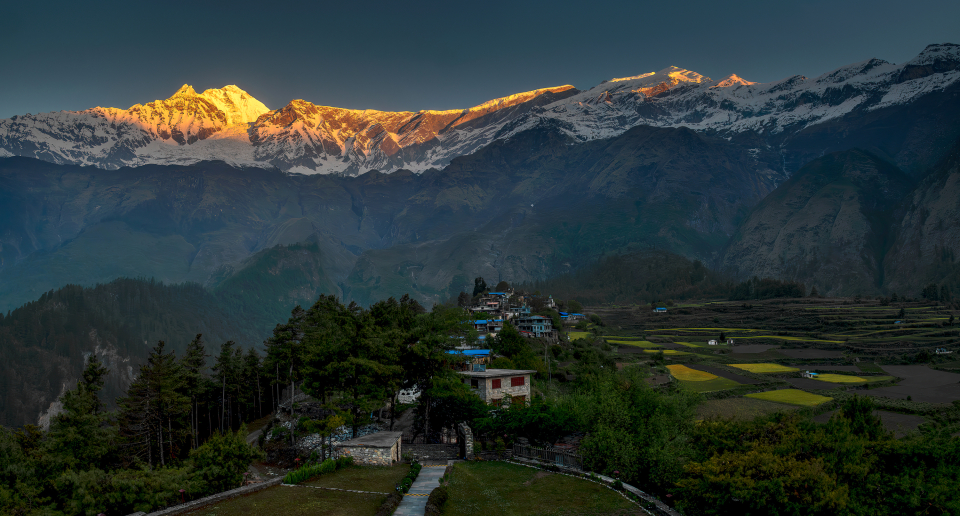Some years ago, back when I spent more time than I likely needed perusing online photography forums, I came across an interesting post that has always stuck with me. In the post, a seemingly new-to-photography woman commented favorably on the post-processing of a particular image. As I recall this was in a longish thread offering various (generally) constructive criticisms of the photo. Out of the blue, in jumps another commenter “explaining,” to her in particular, but by default, everyone in general, that real photographers – especially pros like him -- don’t do any processing whatsoever. Their (his) photography is so perfect that SOOC (Straight Out Of Camera) is the only thing he does and everyone else needs to get with the program and stop using any post-processing tools. Afterall (he wrote), I’m a photographer not a computer scientist! Now I’m sure that Ansel Adams and Edward Weston and numerous other pros (and non-pros) of the past considered themselves photographers and not chemists but mix chemicals and hang out in a smelly darkroom they did to capture on paper what was in their mind’s eye. With the aid of the commenter’s username and his bragging about where and what he photographed, I was able to find his online presence, so curious I was about this “pro’s” self-proclaimed awesomely great images. Though some of the compositions were fine, the end results were insipid, uninspired, flat, without impact or interest. Why? He took the photo but he didn’t make.
One of Ansel Adams’ most famous photographs, Moonrise, Hernandez, New Mexico has quite an interesting story behind it. If you are not familiar with it this video made with his son is quite instructive: https://www.youtube.com/watch?v=d_Ar5ZPuKUM (the section starting around 5:44 cuts to the chase). As Adams often said, “The negative is the score, the print is the performance.” Or, “You don't take a photograph, you make it.” Edward Weston was famous for spending weeks making one print after another of a given image and chucking the rejects into a growing pile until finally he arrived at the print that he visualized. Now, despite what the “pro” in the first paragraph yammered on about, many of us follow the same general path laid down by the (real) pros of yore, substituting Lightroom (and Photoshop and other soft tools) for the darkroom. This doesn’t necessarily mean that we can be sloppy in the field. We should try to get right as much as possible with our camera settings, given the light and subject matter. And, there is no fix for badly composed images (well, with A.I., that is isn’t exactly true anymore, but we’ll leave that aside for now). Often shooting is an act of conscious (or unconscious) compromise and we take what we can as serendipity doesn’t knock repeatedly.
With the above in mind, let’s take a look at what was involved in the making of this image, Sunrise Comes to Thasang, Nepal. First it is clearly a panorama and has a very large dynamic range, from the top of the snowy peaks to the deep shadows of the valley and village. In the field, I horizontally hand-held and bracketed three 1-stop exposures for the left view then swiveled and did the same for the right view. The ISO was 200 and the aperture was f8. That was it for the “taking” of the image. In Lightroom, even though the ISO was low, I was concerned about noise in the shadow areas so I ran the new DeNoise AI tool on each of the 6 images (I was also shooting with a Lumix Micro 4/3s mirrorless, so the file size was only 20mp). I then executed Lightroom’s built-in Photo Merge>HDR Panorama tool. I often use the LR/PS plug-in Aurora HDR 2019 and though it has a lot of functionality, sometimes it yields an over-processed image. The Lightroom HDR tool is pretty even-handed in its processing. With the blended HDR pano image and still in Lightroom I was able to tone-down the near-blown-out highlights on the snows above but I could only partially alleviate the deep valley shadows. I opened the file in Photoshop and then using DXO’s Color Efex Pro toolset I was able to provide a bit more contrast overall whilst applying a radical graduated neutral density filter than allowed me to maintain the light on the ridge line and at the same time significantly open up the shadows in the valley/village so that details could finally emerge. Finally, I ran Topaz’ Sharpen AI application which often does a superlative job sharpening and reducing noise. This provided the final punch – the “making” – of the image and was in fact what I visualized (more or less) back in May when I first captured the frames.

